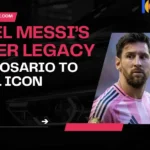For Parents Who Want a Clear Decision Framework
Introduction: The Youth Sports Maze
“I wasted $2,300 on the wrong soccer program before learning these lessons. Let me save you from making the same mistakes.”
The Problem:
Most parents (including me!) get tricked by:
- Shiny facilities – Just because a club has fancy fields doesn’t mean they have good coaching.
- False promises – “We’ll get your kid recruited!” (Spoiler: Most don’t.)
- Time traps – Practices 5 nights a week sound great… until homework suffers.
The Solution:
After interviewing 10 athletic directors, I created a simple 5-step system to pick the right program. No stress. No regrets.
Key Question:
“Is this about my child’s dreams… or mine?”
 Decoding Youth Sports Programs: Finding the Right Fit
Decoding Youth Sports Programs: Finding the Right Fit
Choosing a sports program for your child shouldn’t feel like solving a puzzle. Let’s look at the three main types – premier, recreational, and school teams – in plain English so you can pick what works best for your family.
Premier/Elite Programs: The Intensive Path
What You’re Paying For:
- Top-notch coaching from trainers who often played at college/pro levels
- Exposure opportunities at tournaments where scouts might watch
- High-level competition that pushes athletes to improve
What You’re Signing Up For:
- Major time commitment: 12-15 hours weekly (practice 4-5 days + games)
- Steep costs: 2,500−5,000/year before equipment and travel
- Family impact: Weekends spent at tournaments, less free time
The Reality:
While premier programs market college opportunities, only about 23% of participants actually get athletic scholarships. Many college recruits come from school teams too!
Watch Out For:
Programs that promise “guaranteed” scholarships – no one can actually promise this.
Recreational Leagues: The Fun Approach
Why Parents Love Rec:
- Affordable: Typically 150−500 per season
- Flexible: 1-2 practices and 1 game weekly
- Low-pressure: Focuses on enjoyment and fundamentals
Hidden Perks:
- Kids can play multiple sports in the same year
- Great for developing social skills with different friend groups
- Less risk of burnout from over-specialization
When to Consider Moving Up:
If your child:
- Consistently dominates games (like scoring 3+ goals regularly)
- Asks for more challenging competition
- Shows extra dedication (practicing on their own)
School Teams: The Balanced Option
Academic Advantages:
- Built around the school schedule (no summer commitments)
- Often requires minimum GPAs (usually 2.0-2.5)
- Teachers/coaches understand homework demands
What Coaches Notice:
- Multi-sport athletes often have:
- Better all-around athleticism
- Lower injury rates
- More coachable attitudes
Limitations to Know:
- Shorter seasons (8-12 weeks typically)
- Coaching quality varies greatly by school
- Less individual skill development than premier
Which Type is Right?
Still unsure? Ask yourself:
- How much does my child love this sport?
- What can our family realistically afford?
- How will this affect schoolwork and family time?
For a detailed cost comparison:
[Check Out Our Rec vs Premier Cost Calculator]
Remember:
The best program is the one where your child:
- Has fun
- Gets better
- Wants to keep playing
No single path works for every kid – and that’s okay!
The 5-Step Evaluation System for Choosing Youth Sports Programs
Choosing the right sports program for your child shouldn’t feel like a guessing game. This simple 5-step system helps you pick the best fit—without regrets.
Step 1: The Parking Lot Test
What to Do:
Show up 15 minutes early to practices or games. Don’t go inside yet—just watch from your car or the sidelines.
What to Look For:
Good Coaches:
- Give high-fives when kids arrive
- Use clear, encouraging instructions (“Nice pass! Now try…”)
- Kneel down to talk to kids at eye level
Bad Coaches:
- Yell at mistakes (instead of teaching)
- Stand with arms crossed, looking bored
- Only pay attention to the “star” players
Real Parent Tip:
“I once saw a coach throw a clipboard. We left immediately.” – Sarah, mom of 10-year-old
Step 2: The Money Talk
The Question to Ask:
“What’s included in the fees, and what costs extra?”
Common Hidden Fees:
- “Required” gear (e.g., $400 for team warm-ups)
- Tournament travel (hotels, gas, food)
- Fundraising expectations (“Sell 50 candy bars or pay $200”)
Smart Move:
Ask for a written list of all possible expenses before signing up.
Example:
One mom thought her daughter’s soccer club cost 1,200.Byseason’send,she’dspent∗∗2,800** on extras.
Step 3: The Calendar Check
How to Do It:
- Get the full practice/game schedule
- Mark all dates on your family calendar
- Look for:
Red Flags:
- More than 2 conflicts with school events (concerts, tests)
- Weekend-long tournaments every month
- Late weeknight practices (after 8 PM for young kids)
Good Schedule:
- Fits your family dinners and homework time
- Leaves 1-2 free weeknights
Pro Tip:
If the schedule looks overwhelming, it probably is.
Step 4: The Buddy System
Why It Matters:
Having 1-2 teammates you know helps with:
- Carpooling (saves time and gas)
- Team bonding (kids feel more comfortable)
- Getting honest feedback (“Is Coach always this intense?”)
How to Find Buddies:
- Ask at school or neighborhood groups
- Post in local parent Facebook groups
- Attend open houses/tryouts together
Step 5: The Exit Plan
Before You Sign Up, Ask:
“What’s your policy if we need to quit mid-season?”
Good Programs Offer:
- Partial refunds (if leaving early for valid reasons)
- No penalty for injuries
- Transparent rules in writing
Bad Programs:
- Keep all money no matter what
- Guilt-trip you (“You’re letting the team down!”)
Why This System Works
Takes 30 minutes max per program
Uses real-world checks (not just brochures)
Prevents 90% of regrets parents have
Need Help Comparing Programs?
Download Our Free “Youth Sports Evaluation Worksheet” [Link]
Final Thought:
The right program makes your child excited to play—not stressed or exhausted. These 5 steps help you find it.
Real Parent Stories: What Worked (And What Didn’t)
Every parent wants the best for their child’s sports journey—but sometimes, the “best” isn’t what we expect. Here are real stories from parents who’ve been through it, so you can learn from their wins and mistakes.
The Good: When Less Pressure = More Progress
Jen’s Story (Ohio):
“We put our 10-year-old daughter in a recreational soccer league instead of jumping straight to premier. Best decision ever!
- No yelling coaches – Just fun drills and encouragement
- More creativity – She tried new moves without fear of mistakes
- Shock result: After 2 rec seasons, she made the select team anyway—with better skills than kids who’d been in elite programs for years!”
Why It Worked:
No burnout from over-training
Genuine love for the game stayed strong
Saved $2,000+ in premier fees
Lesson: “Sometimes ‘less competitive’ means ‘more improvement.’”
The Bad: When ‘Elite’ Doesn’t Mean ‘Good’
Mark’s Story (Texas):
“We paid $3,500 for a ‘premier’ baseball program. Big mistake.
- Coach was a 19-year-old college freshman (getting paid minimum wage)
- 50% of practices canceled (he had exams)
- Zero college scouts showed up, despite promises
- Team folded mid-season when the director took the money and left
What We Learned:
Ask for coach resumes before paying
Get refund policies in writing
Verify ‘scout attendance’ claims with past parents
Lesson: “Expensive doesn’t always mean experienced.”
 5 Smart Next Steps for Parents
5 Smart Next Steps for Parents
1. Try Before You Buy
- Good programs offer free trial classes (take advantage!)
- Watch a full practice (not just a showcase)
- Ask: “Can my child join one session to see if they like it?”
2. Talk to Veterans
- At games/practices, ask other parents:
- “Would you sign up again?”
- “What surprised you about this program?”
- Check Facebook groups for honest reviews
3. Trust Your Gut
- If a coach seems too intense for your child’s age…
- If the costs feel shady…
- If the schedule looks impossible…
Listen to that feeling.
4. Compare Multiple Options
- Visit at least 3 programs before deciding
- Use our [Program Comparison Cheat Sheet]
5. Remember: Kids Change
- A 7-year-old who loves soccer might prefer basketball at 10
- It’s okay to switch programs (or take a season off)
Free Download: Your Decision Helper
“Youth Sports Program Comparison Cheat Sheet”
- Side-by-side cost breakdowns
- Checklist of must-ask questions
- Red flag warnings to spot bad programs
Final Thought
The best program fits your child’s personality—not just their talent level. As Jen and Mark learned, sometimes the “right” choice isn’t the most obvious one.
Need help with a specific situation? Comment below—we’ll answer!




 Decoding Youth Sports Programs: Finding the Right Fit
Decoding Youth Sports Programs: Finding the Right Fit 5 Smart Next Steps for Parents
5 Smart Next Steps for Parents









